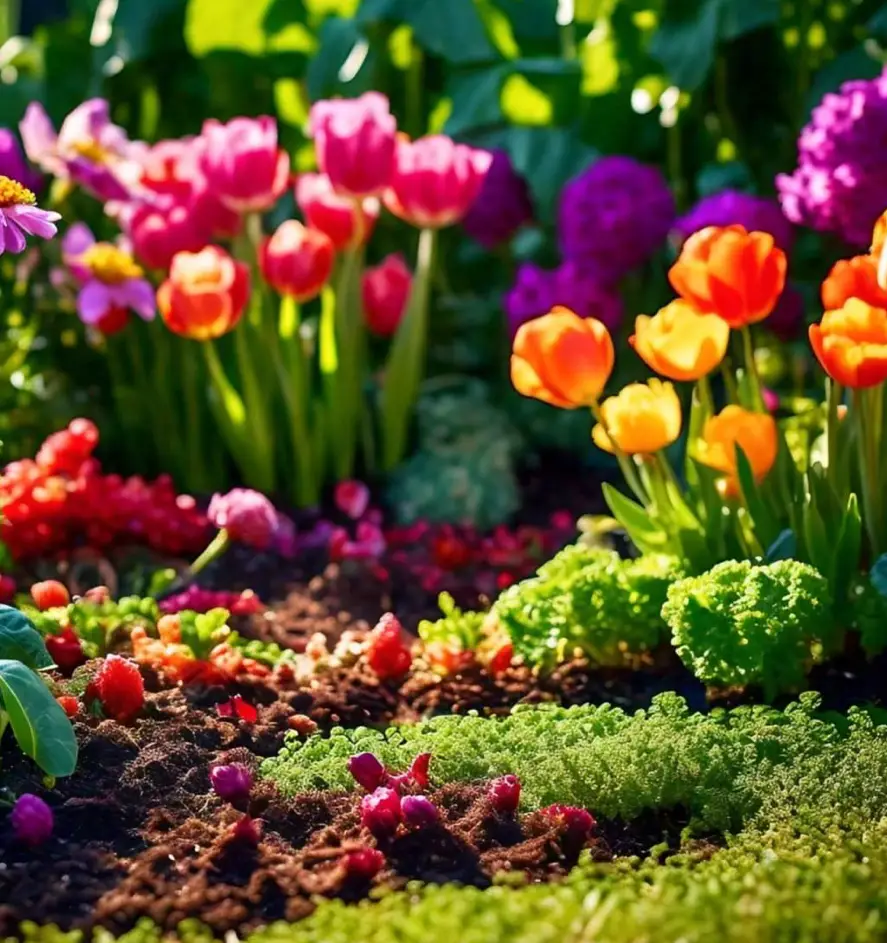Healthy soil is the foundation of a thriving garden. Whether you’re growing flowers, vegetables, or herbs, the right soil can make all the difference in the success of your plants. In this blog, we’ll explore what makes soil healthy, how to improve your soil, and tips for using it to ensure your garden flourishes.
What Makes Soil Healthy?
Healthy soil is rich in nutrients, has good structure, and supports a diverse community of microorganisms. Here are the key components of healthy soil:
1.Organic Matter: Decayed plant and animal materials that provide nutrients and improve soil structure.
2.Minerals: Essential elements like nitrogen, phosphorus, and potassium that plants need to grow.
3.Microorganisms: Beneficial bacteria, fungi, and other organisms that help break down organic matter and make nutrients available to plants.
4.Good Drainage and Aeration: Soil that allows water to drain properly and roots to get enough oxygen.
5.pH Balance: Most plants prefer a slightly acidic to neutral pH (6.0-7.0).
Improving Your Soil
Improving your soil involves enhancing its structure, fertility, and biological activity. Here’s how you can achieve that:
1.Add Organic Matter:
•Compost: Homemade or store-bought compost enriches soil with nutrients and improves its texture.
•Manure: Well-rotted manure adds nutrients and organic matter. Avoid fresh manure as it can burn plants.
•Mulch: Organic mulches like straw, leaves, and wood chips break down over time, adding organic matter to the soil.
2.Use Cover Crops:
•Planting cover crops like clover, peas, or rye during off-seasons can add nitrogen and organic matter to the soil, improve soil structure, and reduce erosion.
3.Test and Adjust pH:
•Test your soil’s pH and add lime to raise pH (reduce acidity) or sulfur to lower pH (increase acidity) as needed.
4.Incorporate Minerals:
•Add rock dust or specific mineral fertilizers to address deficiencies in nutrients like phosphorus or potassium.
5.Promote Microbial Activity:
•Avoid over-tilling and use organic fertilizers to encourage beneficial microorganisms. Consider using mycorrhizal fungi to improve plant root systems.
Using Healthy Soil in Your Garden
Once you’ve built healthy soil, here are some tips for using it effectively:
1.Prepare Planting Beds:
•Loosen the soil to a depth of 12-18 inches to encourage deep root growth. Remove weeds and mix in compost or other organic matter.
2.Proper Planting Techniques:
•Plant at the correct depth and spacing for each type of plant. Firm the soil around the roots to eliminate air pockets.
3.Mulch Generously:
•Apply a 2-3 inch layer of organic mulch around plants to conserve moisture, regulate soil temperature, and reduce weeds.
4.Water Wisely:
•Water deeply and infrequently to encourage deep root growth. Use soaker hoses or drip irrigation to minimize water loss.
5.Rotate Crops:
•Rotate plant families each year to prevent nutrient depletion and reduce pest and disease buildup.
6.Maintain Soil Health:
•Continuously add organic matter, test soil regularly, and adjust pH and nutrients as needed.
Conclusion
Healthy soil is a dynamic, living system that requires regular care and attention. By understanding what makes soil healthy and implementing these practices, you can create an optimal growing environment for your plants. Happy gardening!
For more gardening tips and tricks, stay tuned to our blog and let us know how your garden grows!
Healthy Soil:

